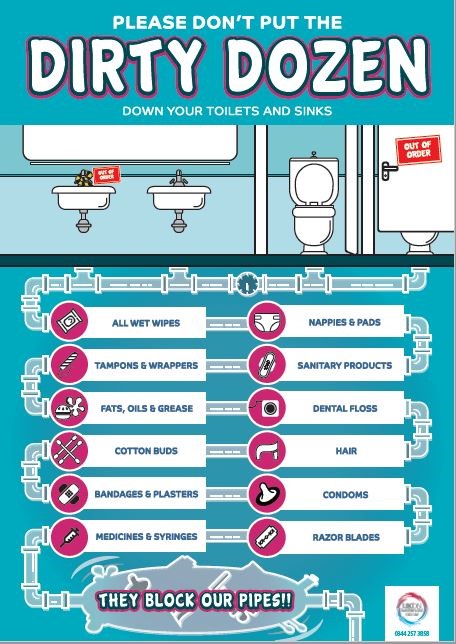By Sara Jerome Flushing contact lenses is contributing to water pollution because lenses do not break down entirely in wastewater treatment systems, according to a new study. “Americans use about 14-billion contact lenses every year, resulting in an estimated 50,000 pounds winding up in sinks and toilets,” WTOL reported. Researchers presented the findings at an American Chemical Society event in August, according to the organization. “The team estimates that anywhere from six to 10 metric tons of plastic lenses end up in wastewater in the U.S. alone each year. Contacts tend to be denser than water, which means they sink, and this could ultimately pose a threat to aquatic life, especially bottom feeders that may ingest the contacts,” the statement said, citing researcher Rolf Halden. Exactly what happens to contact lenses at wastewater plants is tricky to nail down.
Drainage’s Dirty Dozen Twelve things we should never flush

Click here to download your Dirty Dozen poster.
A new survey names 12 things we should never flush down the sink or toilet – the drainage Dirty Dozen, responsible for millions of pounds’ worth of blockages to the sewer network.
Less commonly flushed items include illegal drugs, medicines – even hamsters, according to UKDN. Flushing these items threatens marine life and presents a health hazard, and creates expensive problems for water companies.
UKDN says millennials are six times more likely than people aged over 55 to pour cooking oil down the drain, where it mixes with other unflushables, building up to clog our sewers with fatbergs.
No Comment